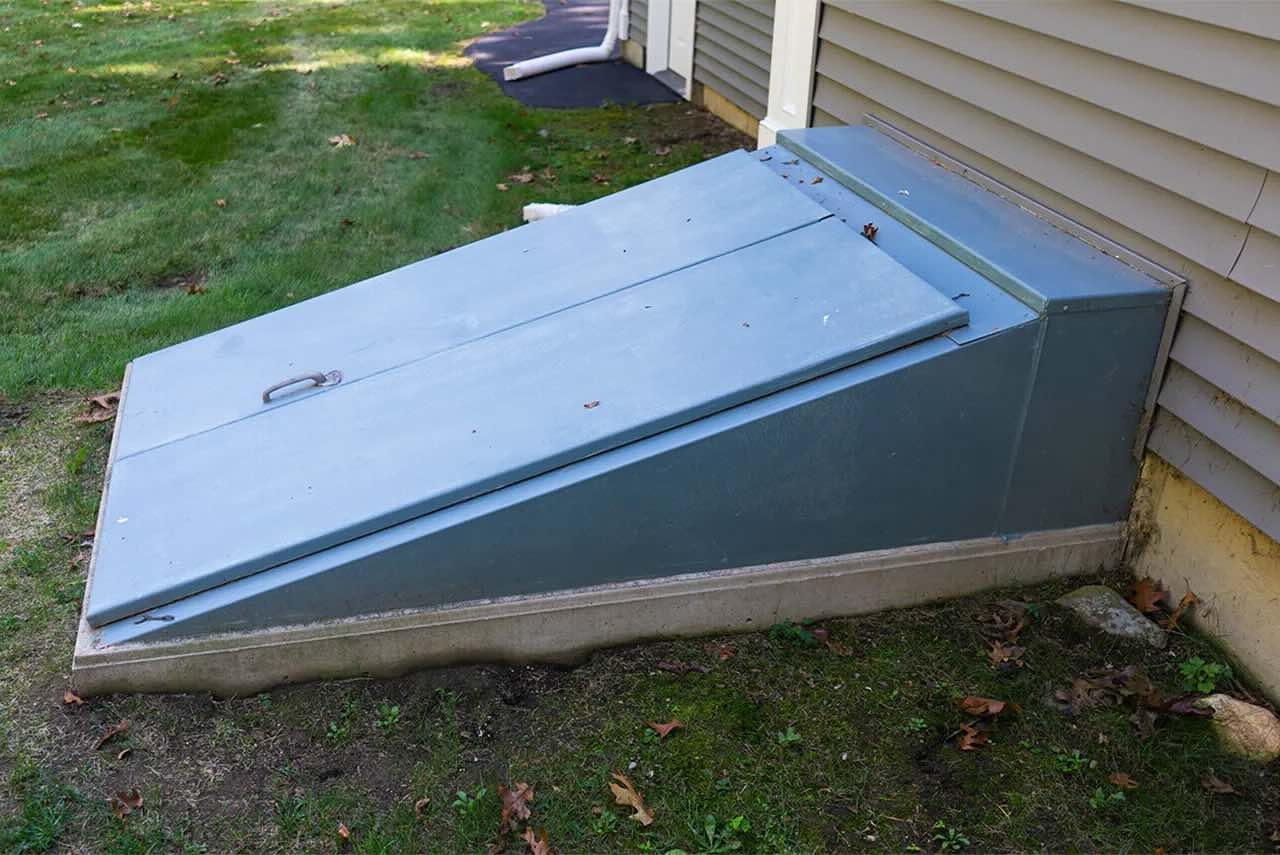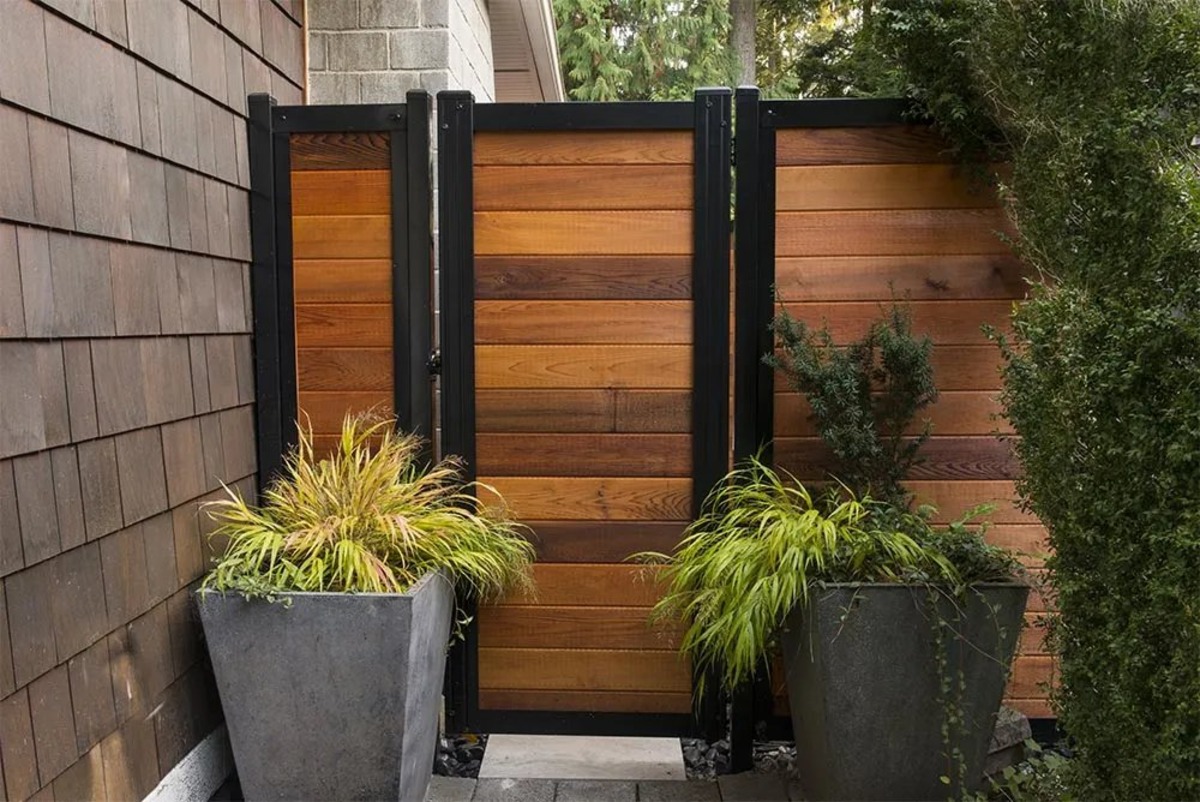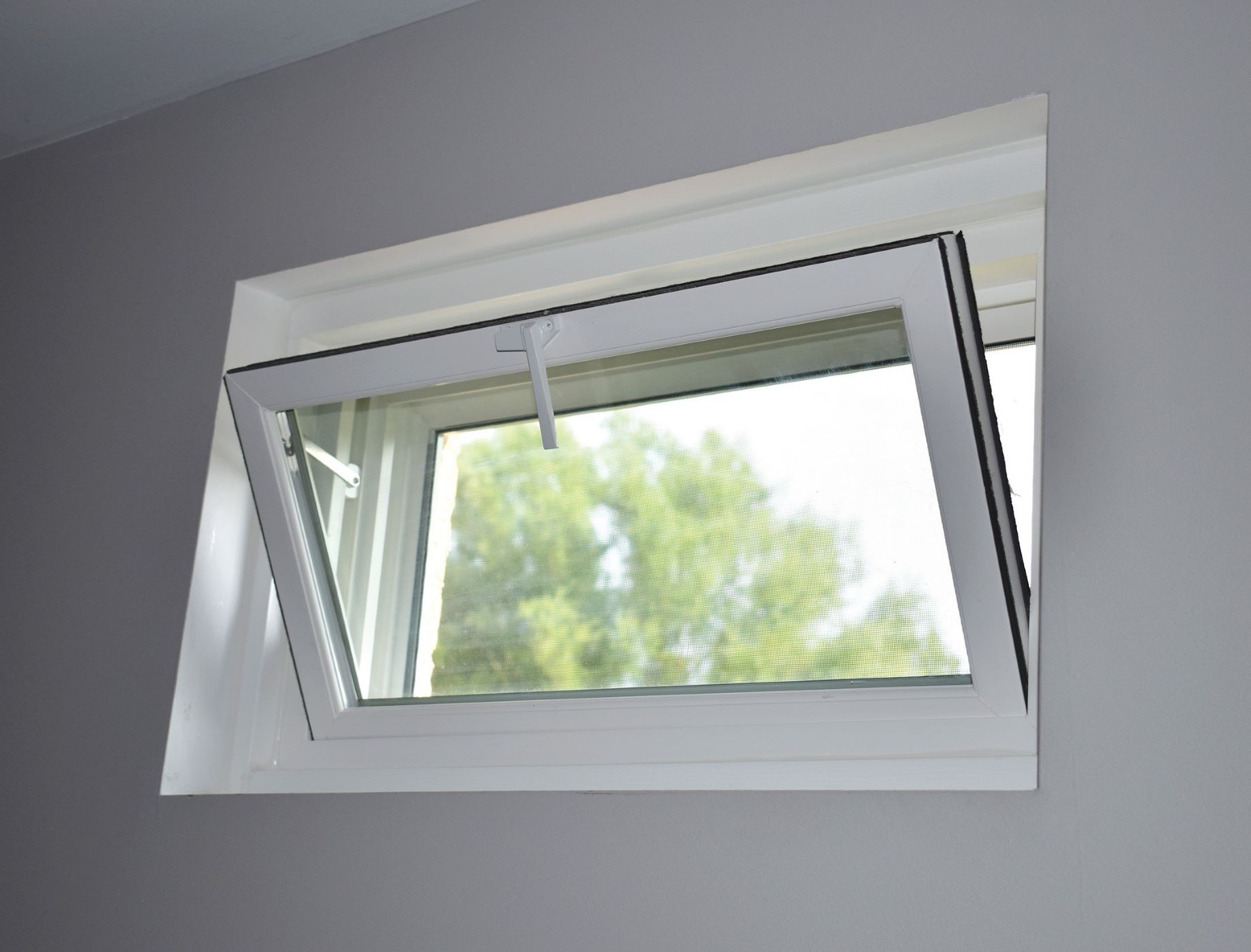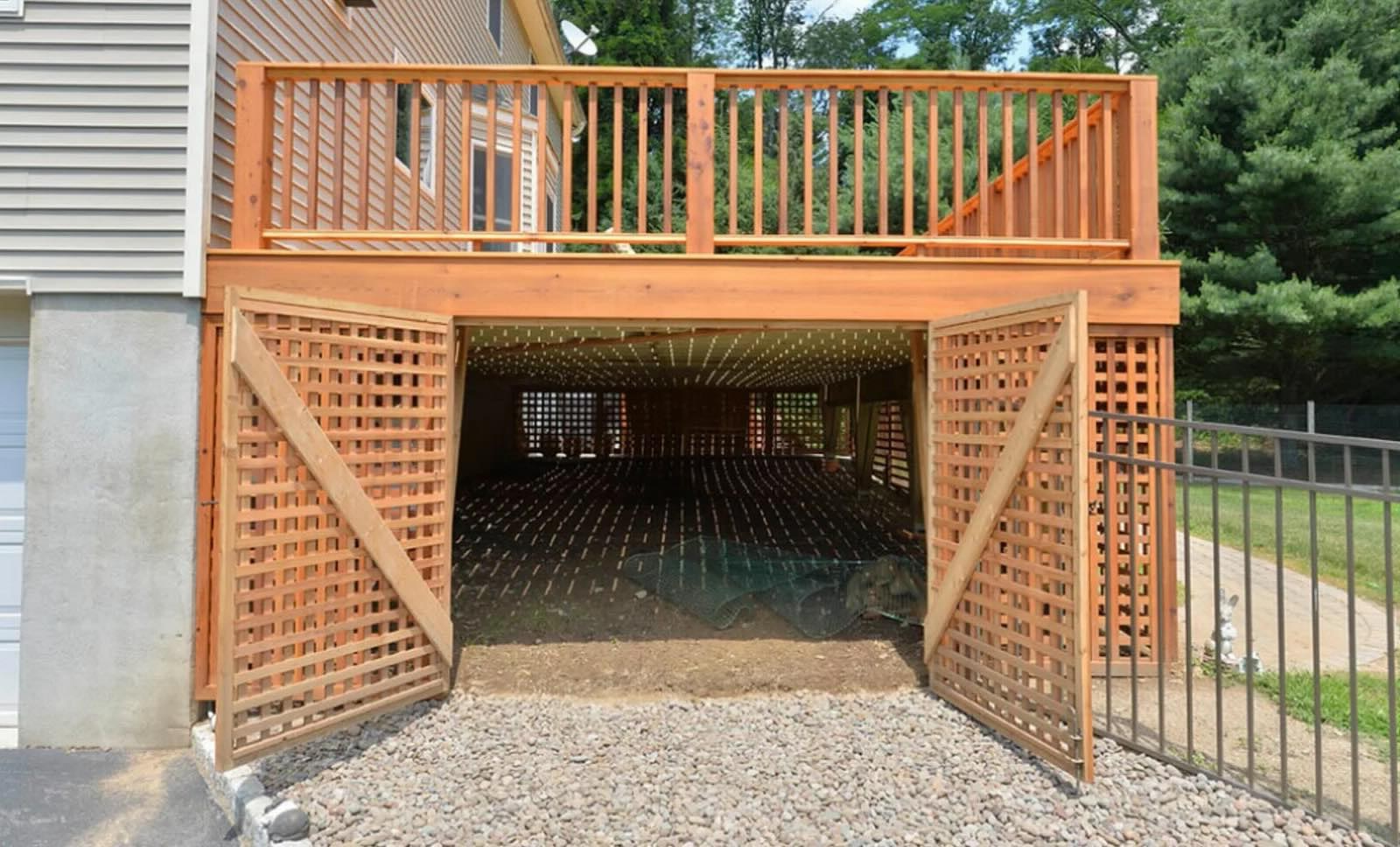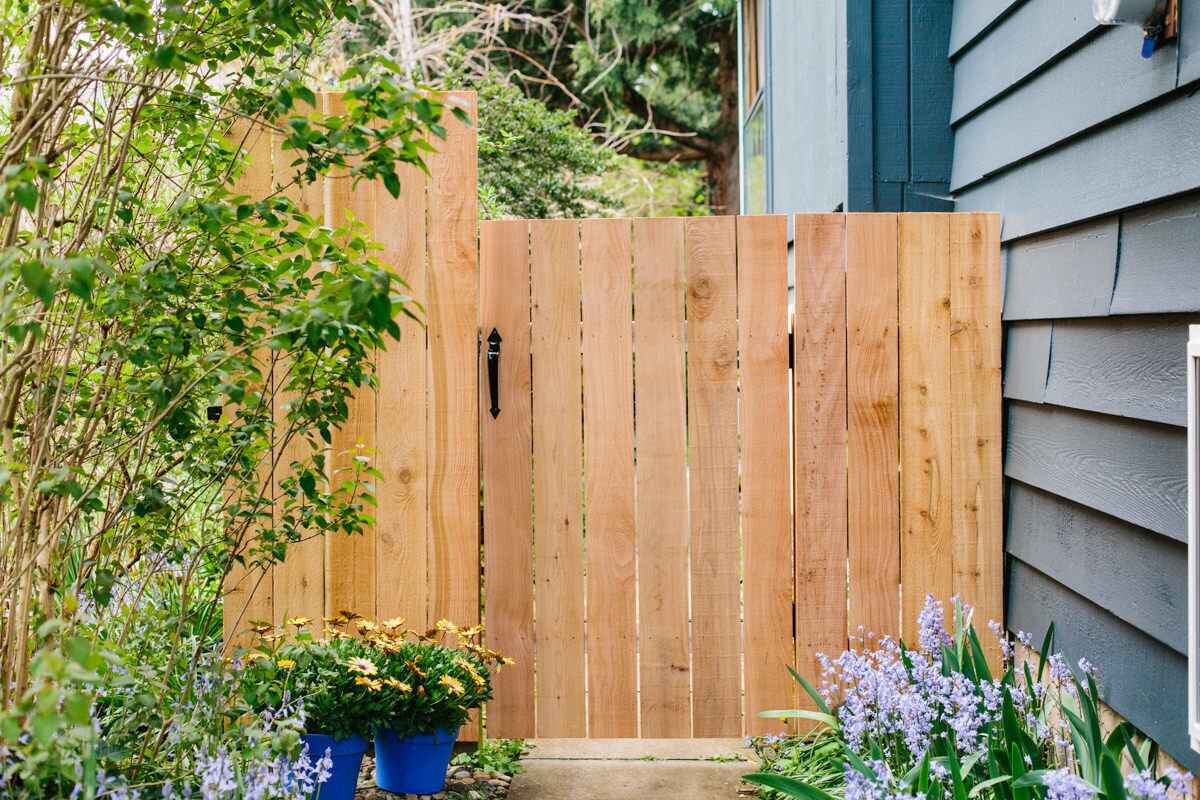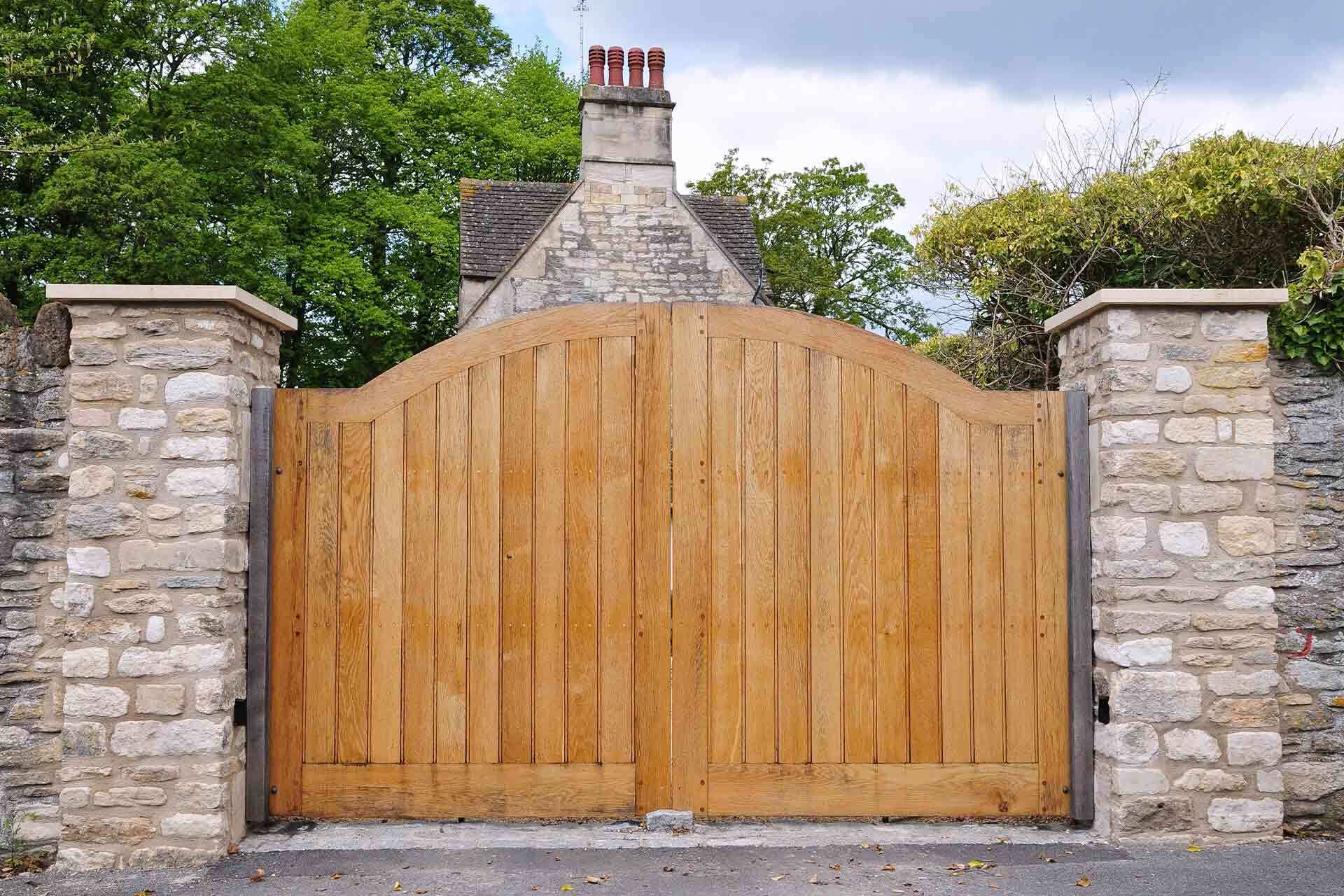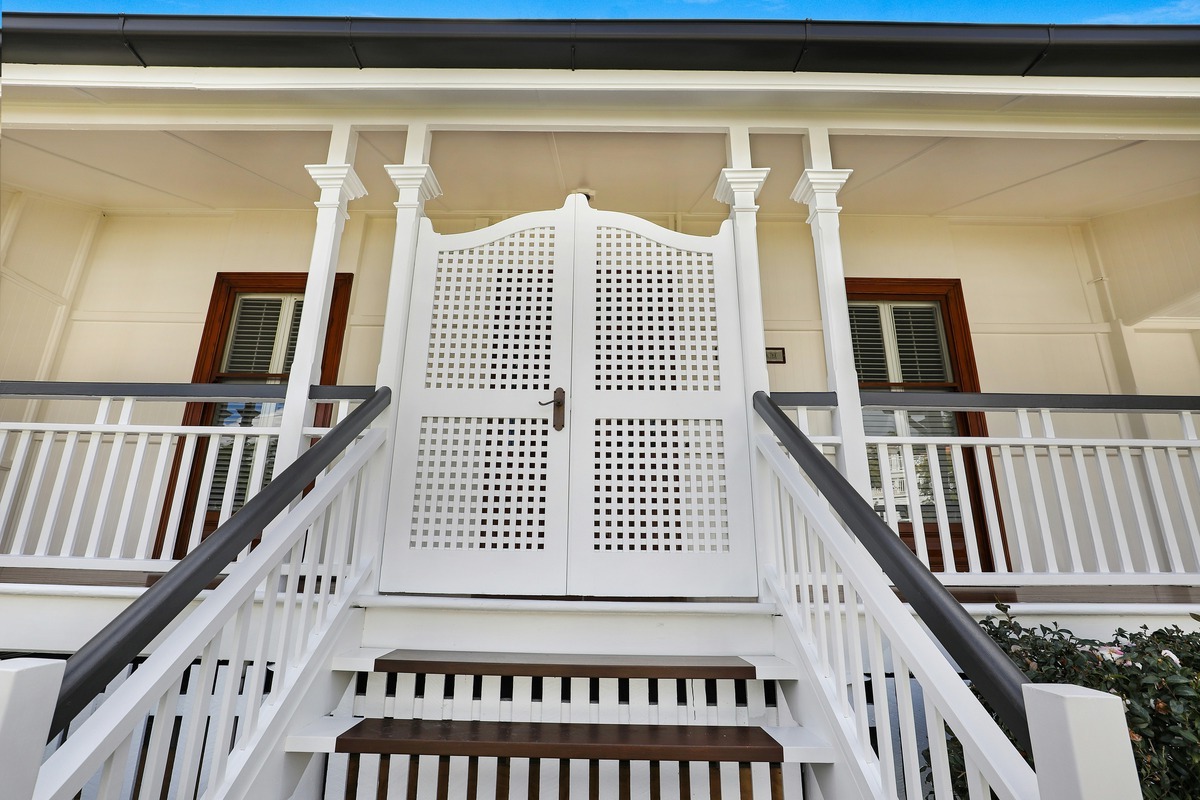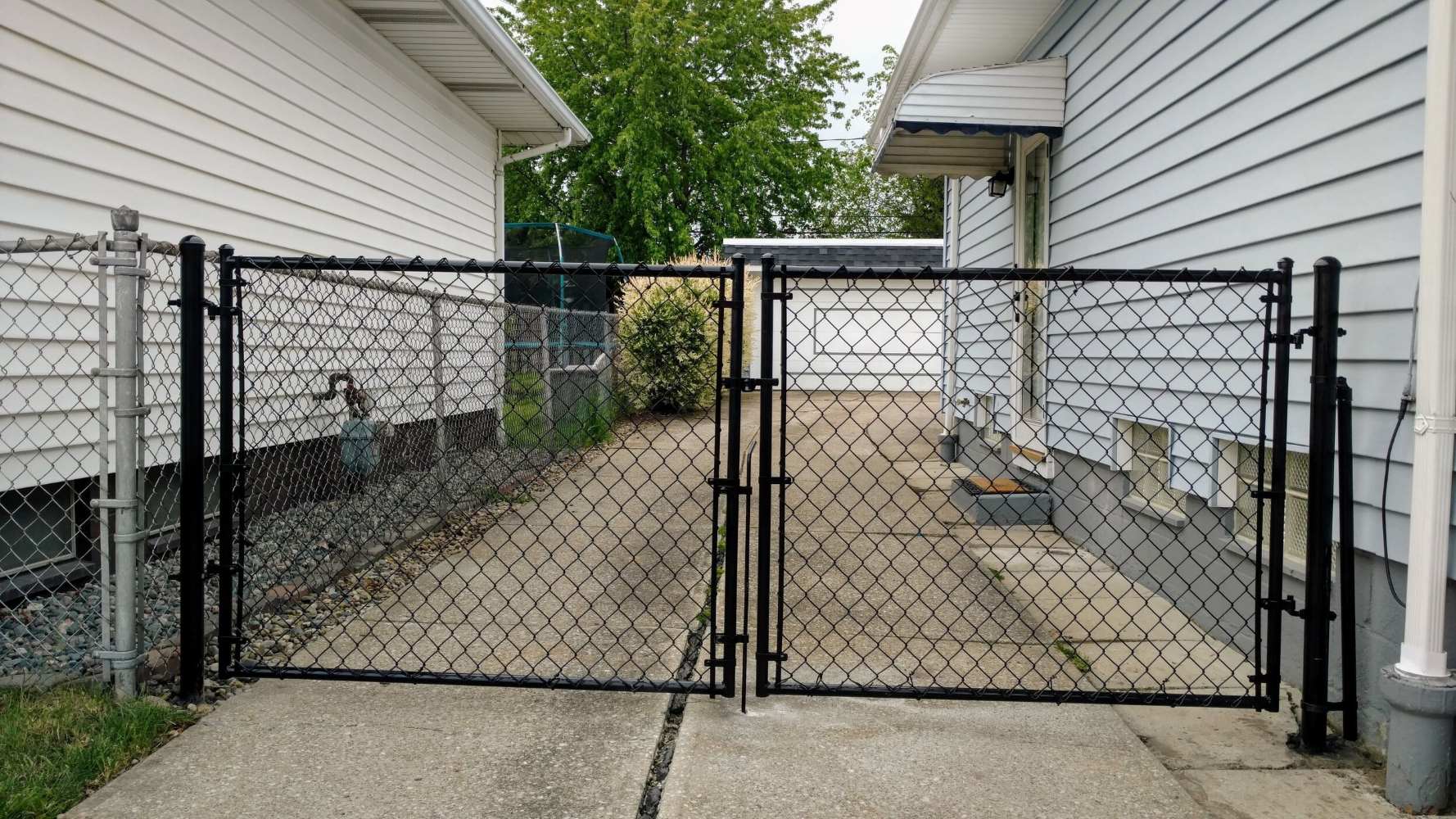Home>Create & Decorate>DIY & Crafts>DIY Deck Gate: Step-by-Step Guide To Building A Secure And Stylish Entrance


DIY & Crafts
DIY Deck Gate: Step-by-Step Guide To Building A Secure And Stylish Entrance
Published: February 27, 2024

Content Creator specializing in woodworking and interior transformations. Caegan's guides motivate readers to undertake their own projects, while his custom furniture adds a personal touch.
Learn how to build a secure and stylish DIY deck gate with our step-by-step guide. Perfect for adding a touch of craftsmanship to your outdoor space. Ideal for DIY & Crafts enthusiasts.
(Many of the links in this article redirect to a specific reviewed product. Your purchase of these products through affiliate links helps to generate commission for Twigandthistle.com, at no extra cost. Learn more)
Introduction
Welcome to the comprehensive guide on building your very own DIY deck gate. Whether you're a seasoned DIY enthusiast or just starting out, this step-by-step tutorial will equip you with the knowledge and confidence to create a secure and stylish entrance to your deck. A deck gate not only adds a touch of elegance to your outdoor space but also serves a crucial function by providing a safe enclosure for children and pets.
In this guide, we will walk you through the process of measuring, cutting, and assembling the necessary materials to construct a sturdy and visually appealing deck gate. You'll learn how to select the right tools and materials, ensuring that your project is not only aesthetically pleasing but also durable and long-lasting.
By following these instructions, you'll be able to customize the design to complement your existing deck, whether it's made of wood, composite materials, or another type of decking. With a few simple steps and a bit of creativity, you can elevate the functionality and charm of your outdoor living space.
So, roll up your sleeves, gather your tools, and let's embark on this rewarding DIY journey together. Whether you're aiming for a rustic, traditional look or a modern, sleek finish, this guide will empower you to create a deck gate that perfectly suits your style and needs. Let's get started on this fulfilling and practical project!
Read more: DIY Barn Door Baby Gate Guide
Materials and Tools Needed
To embark on this DIY project, you'll need a carefully curated selection of materials and tools to ensure the successful construction of your deck gate. Here's a comprehensive list to guide you through the preparation phase:
Materials:
- Wood: Select high-quality lumber that is suitable for outdoor use. Cedar, redwood, or pressure-treated pine are popular choices due to their durability and resistance to rot and decay.
- Gate Hardware: Invest in sturdy hinges and a reliable latch to ensure smooth operation and secure closure of the gate.
- Screws and Nails: Opt for weather-resistant screws and nails to withstand outdoor conditions and prevent rusting.
- Wood Glue: Choose a waterproof wood glue to reinforce the joints and enhance the overall strength of the gate.
- Finishing Materials: Consider exterior-grade paint, stain, or sealant to protect the wood from moisture and UV damage while adding a touch of style to the gate.
Tools:
- Measuring Tape: Accurate measurements are crucial for a precise and well-fitted gate, so a reliable measuring tape is essential.
- Circular Saw or Miter Saw: A saw capable of making straight and angled cuts will be indispensable for shaping the wood to the desired dimensions.
- Drill and Bits: A power drill with a selection of drill bits will facilitate the assembly process and the installation of hardware.
- Screwdriver: Both manual and electric screwdrivers will be useful for driving screws into the wood.
- Clamps: Sturdy clamps will aid in securing the wood pieces during assembly, ensuring precise alignment and tight joints.
- Level: A level is indispensable for ensuring that the gate is installed perfectly plumb and level for smooth operation.
- Safety Gear: Don't forget to prioritize safety by wearing protective eyewear, gloves, and a dust mask when working with wood and power tools.
By gathering these materials and tools, you'll be well-equipped to commence the construction of your DIY deck gate. With the right resources at your disposal, you can proceed to the next steps with confidence, knowing that you have everything you need to bring your vision to life.
Step 1: Measure and Plan
Before diving into the physical construction of your DIY deck gate, it's crucial to start with meticulous measurements and a well-thought-out plan. This initial step sets the foundation for a gate that fits seamlessly into your deck's design and functions flawlessly for years to come.
Begin by measuring the opening where the gate will be installed. Take precise measurements of the width and height, accounting for any variations in the terrain or deck surface. It's essential to measure at multiple points to accommodate any irregularities and ensure a perfect fit.
Next, consider the swing direction of the gate. Determine whether it will swing inward or outward, and plan for adequate clearance to prevent any obstructions. This step is particularly important for decks with limited space, as it ensures that the gate can open and close without hindrance.
With the measurements in hand, sketch out a detailed plan for the gate's design and structure. Consider the style of your deck and envision how the gate will complement its aesthetic. Will it feature a traditional picket design, a sleek and modern look, or a custom pattern that reflects your personal taste? Take the time to visualize the end result and translate it into a comprehensive plan.
As you plan, factor in the necessary materials and hardware. Determine the type and quantity of wood needed for the frame and slats, ensuring that it aligns with your design and budget. Additionally, select the appropriate hinges and latch that will support the gate's weight and provide secure closure.
Lastly, consider any additional features or embellishments, such as decorative accents or a custom finish. These details will add character to your gate and elevate its visual appeal.
By meticulously measuring and planning the construction of your deck gate, you lay the groundwork for a successful and satisfying DIY project. With a clear vision and a well-defined plan, you're ready to move on to the next step of cutting the wood and bringing your gate to life.
Read more: DIY Sliding Gate For Your Deck
Step 2: Cut the Wood
With precise measurements and a well-crafted plan in hand, it's time to bring your deck gate to life by cutting the wood to the required dimensions. This step is crucial in shaping the individual components that will form the frame and slats of the gate, ensuring a perfect fit and seamless assembly.
Begin by selecting the appropriate wood for your project, considering both its durability and aesthetic appeal. Whether you opt for the natural warmth of cedar, the rich tones of redwood, or the resilience of pressure-treated pine, ensure that the wood is suitable for outdoor use and capable of withstanding the elements.
Using your measurements and plan as a guide, carefully mark the wood for cutting, accounting for the dimensions of the frame and the spacing of the slats. A circular saw or miter saw will be indispensable for making precise cuts, whether they are straight, angled, or mitered, depending on your design.
As you cut the wood, pay close attention to the accuracy of each piece, striving for clean and uniform edges that will facilitate seamless assembly. Remember to prioritize safety by wearing protective gear and following proper techniques when operating power tools.
Once the individual components are cut to size, take a moment to dry-fit the pieces together to ensure that they align perfectly and form a sturdy frame. This step allows you to make any necessary adjustments before proceeding to the assembly phase, saving time and minimizing errors.
In addition to the frame, the slats that form the infill of the gate will also need to be cut to the specified length. Whether you opt for a classic picket design or a custom pattern, precision in cutting the slats is essential to achieve a visually appealing and structurally sound gate.
By meticulously cutting the wood to the required dimensions, you set the stage for the next phase of assembling the frame and adding the slats. With each piece tailored to perfection, you're one step closer to bringing your vision of a secure and stylish deck gate to fruition.
Step 3: Assemble the Frame
With the wood cut to precision, it's time to embark on the pivotal step of assembling the frame for your DIY deck gate. The frame serves as the backbone of the gate, providing structural integrity and support for the slats while ensuring smooth operation and longevity.
Begin by laying out the components of the frame, including the vertical stiles and horizontal rails, in the designated assembly area. Ensure that the pieces are arranged according to your plan, ready to be joined together to form a sturdy and well-aligned frame.
Using a reliable wood glue and weather-resistant screws, carefully attach the rails to the stiles, ensuring that the joints are tight and secure. A power drill equipped with the appropriate drill bits will facilitate the process, allowing you to drive the screws into the wood with precision and ease.
As you assemble the frame, pay close attention to the alignment and squareness of the components, as these factors are crucial for the gate to function seamlessly. Utilize clamps to hold the pieces in place during assembly, preventing any shifting or misalignment that could compromise the integrity of the frame.
Once the frame is fully assembled, take a moment to assess its stability and structural soundness. Check for any gaps or inconsistencies in the joints, making any necessary adjustments to ensure a snug and uniform fit. This meticulous approach will contribute to the overall strength and durability of the gate.
In addition to the primary frame, consider reinforcing the corners with diagonal braces for added stability, especially for larger gates. These braces provide extra support and prevent the frame from warping or sagging over time, enhancing the gate's resilience in the face of varying weather conditions.
By methodically assembling the frame with precision and attention to detail, you lay the groundwork for a robust and reliable deck gate. The completed frame sets the stage for the next phase of adding the slats, bringing you one step closer to the fulfillment of your DIY project.
Step 4: Add the Slats
With the frame securely assembled, it's time to infuse character and functionality into your DIY deck gate by adding the slats. The slats not only contribute to the gate's visual appeal but also play a crucial role in providing security and containment, making this step essential to the overall success of your project.
Begin by positioning the frame in a stable and accessible work area, ensuring that it is well-supported and level. Lay out the slats alongside the frame, taking care to space them evenly and align them according to your design preferences. Whether you opt for a classic picket-style arrangement or a custom pattern, this step allows you to bring your vision to life.
Using weather-resistant screws or nails, carefully attach the slats to the frame, ensuring a secure and uniform placement. A power drill or hammer will facilitate this process, allowing you to affix the slats with precision and efficiency. Pay close attention to the spacing between the slats, striving for a consistent and visually pleasing layout.
As you add the slats, take the opportunity to assess the overall symmetry and alignment of the gate. Ensure that the slats are level and parallel to each other, contributing to a polished and professional finish. This attention to detail will elevate the visual appeal of the gate while reinforcing its structural integrity.
Consider any decorative accents or embellishments that can further enhance the gate's aesthetic appeal. Whether it's adding a decorative cap to the top of the gate or incorporating custom cutouts in the slats, these details can infuse personality and charm into the final design, making your gate a standout feature of your deck.
Once the slats are securely in place, take a moment to admire the transformation of the frame into a fully realized gate. The addition of the slats not only enhances the gate's functionality but also elevates its visual impact, turning it into a striking and integral element of your outdoor space.
By meticulously adding the slats with precision and care, you've brought your DIY deck gate one step closer to completion. The gate now stands as a testament to your craftsmanship and creativity, ready to serve as a secure and stylish entrance to your deck for years to come.
Step 5: Install the Hinges
As you progress in the construction of your DIY deck gate, the installation of hinges marks a pivotal step that transforms the assembled gate into a functional and seamlessly operable entrance. Hinges not only facilitate the smooth opening and closing of the gate but also play a crucial role in supporting its weight and ensuring long-term durability.
Begin by selecting high-quality hinges that are specifically designed for outdoor use, capable of withstanding varying weather conditions and providing reliable performance. Consider heavy-duty strap hinges or self-closing hinges, depending on the size and weight of your gate, to ensure optimal functionality and longevity.
Position the gate in its intended location, ensuring that it is level and properly aligned with the adjacent structures. With the assistance of a trusted helper, hold the gate in place while you mark the locations for the hinges on both the gate and the adjoining post or structure. Accurate placement is essential to ensure that the gate swings smoothly and aligns perfectly when closed.
Using a power drill and the appropriate screws, carefully attach the hinges to the gate and the adjacent post, ensuring a secure and stable connection. It's crucial to use weather-resistant screws that are designed for outdoor applications, preventing rust and corrosion over time. Pay close attention to the alignment of the hinges, ensuring that they are level and parallel to each other for optimal performance.
Once the hinges are securely installed, test the gate's swing to ensure that it opens and closes smoothly without any obstructions or misalignment. Make any necessary adjustments to the hinge tension or positioning to achieve the desired operation, taking into account factors such as ground clearance and overall clearance from adjacent structures.
Consider the addition of a reliable latch or lock mechanism to complement the hinges, providing a secure closure for the gate. Whether you opt for a traditional latch, a self-locking mechanism, or a decorative handle, ensure that it complements the overall design of the gate while providing the necessary security and convenience.
With the hinges installed and the gate fully operational, take a moment to appreciate the transformation of your DIY project into a functional and aesthetically pleasing addition to your deck. The successful installation of hinges marks a significant milestone in the completion of your deck gate, bringing you one step closer to enjoying a secure and stylish entrance to your outdoor space.
Step 6: Attach the Gate to the Deck
With the gate fully assembled and operational, the next crucial step is to securely attach it to the deck, ensuring a seamless integration that enhances both functionality and visual appeal. Proper installation not only guarantees the stability and longevity of the gate but also contributes to the overall safety and aesthetics of your outdoor space.
Begin by positioning the gate in its intended location, ensuring that it aligns perfectly with the opening and adjacent structures. Take precise measurements to ensure that the gate is centered and level within the opening, allowing for smooth operation and a polished finish. Utilize shims or spacers as needed to achieve an optimal fit and alignment.
Once the gate is positioned correctly, mark the locations for the hinge screws on the deck surface. Using a power drill and appropriate screws, securely attach the hinges to the deck, ensuring that they are anchored to solid and stable points. It's essential to use weather-resistant screws and consider the weight and swing of the gate to determine the appropriate anchoring points for the hinges.
After the hinges are securely installed, carefully test the gate's swing to ensure that it opens and closes smoothly within the opening. Verify that the gate aligns perfectly with the adjacent structures and that there are no obstructions or misalignments that could impede its operation. Make any necessary adjustments to the hinge tension or positioning to achieve the desired functionality.
Consider the addition of a gate stop or catch to prevent the gate from swinging too far in either direction, protecting it from potential damage and ensuring controlled movement. A gate stop can be installed on the deck surface to limit the gate's swing, providing a reliable and practical solution for maintaining the gate's integrity over time.
With the gate securely attached to the deck, take a moment to admire the seamless integration of this essential element into your outdoor space. The successful attachment of the gate marks the culmination of your DIY project, providing a secure and stylish entrance that enhances the functionality and charm of your deck.
Step 7: Finishing Touches
As you approach the final phase of your DIY deck gate project, it's time to add the finishing touches that will elevate the gate's visual appeal and ensure its long-term resilience. This step encompasses a range of considerations, from protective finishes to decorative accents, all aimed at enhancing the gate's functionality and aesthetic impact.
One of the essential finishing touches is the application of a protective sealant or stain to the wood. This serves as a crucial defense against the elements, shielding the gate from moisture, UV exposure, and potential decay. Choose a high-quality exterior-grade sealant or stain that complements the natural beauty of the wood while providing robust protection. Apply the sealant evenly, ensuring comprehensive coverage that extends the gate's lifespan and preserves its visual allure.
In addition to protective finishes, consider incorporating decorative elements that reflect your personal style and enhance the gate's overall appeal. Whether it's adding custom trim, decorative caps, or ornamental hardware, these details can infuse character and charm into the gate, transforming it into a standout feature of your deck. Embrace creativity and explore options that resonate with your design vision, adding a personalized touch to the gate's aesthetic.
Furthermore, take the opportunity to address any remaining practical considerations, such as adjusting the gate's swing tension and ensuring smooth operation. Fine-tune the hinges and latch to achieve optimal functionality, allowing for effortless opening and secure closure. Verify that the gate aligns perfectly within the opening and that any additional features, such as a gate stop, are effectively in place to enhance the gate's usability.
As you add the finishing touches, step back and admire the transformation of your DIY deck gate. The culmination of your efforts is a secure and stylish entrance that seamlessly integrates with your deck, embodying craftsmanship and attention to detail. The finishing touches not only enhance the gate's visual impact but also contribute to its longevity, ensuring that it remains a functional and captivating element of your outdoor living space for years to come.
Conclusion
In conclusion, the journey of building a DIY deck gate has been a fulfilling and rewarding endeavor, culminating in the creation of a secure and stylish entrance that enhances the functionality and visual appeal of your outdoor living space. Throughout this comprehensive guide, you've embarked on a step-by-step exploration of the process, from meticulous planning and precise measurements to the assembly of the frame, addition of slats, installation of hinges, attachment to the deck, and the final touches that elevate the gate's overall impact.
As you reflect on the completion of this project, it's evident that the DIY deck gate stands as a testament to your craftsmanship and creativity. Not only does it provide a secure enclosure for children and pets, but it also adds a touch of elegance to your deck, seamlessly integrating with the existing design while serving a crucial function. The gate's sturdy frame, precisely cut slats, and thoughtfully installed hinges and latch collectively contribute to its seamless operation and long-term durability.
Beyond its practical utility, the DIY deck gate embodies the spirit of customization and personalization. Whether you've opted for a classic picket design, a modern pattern, or incorporated custom embellishments, the gate reflects your unique style and vision. The finishing touches, including protective sealants, decorative accents, and fine-tuned functionality, further underscore the attention to detail and care invested in this project.
As you admire the completed gate, it's a testament to the transformative power of DIY craftsmanship. The sense of accomplishment and pride that accompanies the successful completion of this project is a testament to your dedication and ingenuity. The gate now stands as a focal point of your outdoor space, inviting admiration and serving as a reminder of the possibilities that unfold when creativity and practicality converge.
Moreover, the knowledge and skills acquired throughout this process extend beyond the completion of the gate. The experience of planning, measuring, cutting, and assembling has equipped you with valuable insights and capabilities that can be applied to future DIY endeavors, further enriching your journey as a skilled creator and homeowner.
In essence, the DIY deck gate represents more than a functional addition to your deck; it embodies the spirit of creativity, resourcefulness, and the joy of hands-on craftsmanship. As you enjoy the fruits of your labor, may the gate serve as a constant reminder of the satisfaction that comes from bringing your vision to life through the art of DIY creation.

